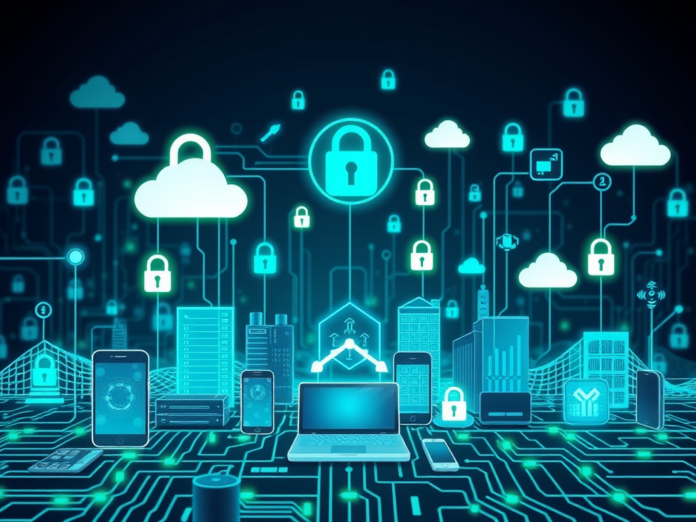Driven by the growing interconnectedness among homes, businesses, and public infrastructure, the digital scene is changing faster than ever. From smartphones and smart homes to cloud computing and the Internet of Things (IoT), the modern world is more connected—and hence more vulnerable—than ever before. Ensuring robust cybersecurity has never been more vital as we move into this digital age. This paper offers practical ideas, real-life experiences, and tested preventive techniques to help cybersecurity experts, companies, and ordinary people manage the rising dangers linked to more digital connections.

What Does More Connectedness Mean?
A growing connection is the growing number of networks, systems, and devices linked together digitally. This includes:
- Laptops, tablets, and smartphones
- Smart home devices—like lighting, cameras, and thermostats
- Wearable devices, including smartwatches and fitness trackers
- Connected vehicles and public infrastructure
- Industrial IoT and smart factories
Though they offer comfort and convenience, these technologies create new access points for cyber dangers such as data breaches, ransomware, phishing, and device hijacking, therefore increasing the attack surface.
The Evolution of Cybersecurity with Connectivity: A Necessity
Cybersecurity tactics have to change and widen as the number of connected devices, projected to reach nearly 30 billion by 2030, grows. The old “perimeter defense” approach aimed to safeguard a network’s outside borders, but it is no longer adequate. Every data packet, person, and device can now be both a target and a possible entry point.
More connection brings major security issues regarding:
- IoT devices without security
- Misconfigurations of cloud systems
- Weaknesses in BYOD (Bring Your Own Device)
- Growing dependence on third-party services
- Digital hygiene and user illiteracy
Best Cybersecurity Policies for a Linked World
Here is how companies and people can reduce cyber risk in a hyper-connected world:
Use a Zero Trust Security Approach
Zero Trust believes no one or gadget is by default trustworthy. Everyone seeking access to resources under Zero Trust must undergo rigorous identification verification. Among the main characteristics are:
- MFA—multi-factor authentication
- Device health audits
- Network micro-segmentation
- Access controls based on roles
Cloud infrastructure that is safe
Setting security parameters right now becomes increasingly more crucial as more services migrate to the cloud. Regular audits, encryption, and cloud access security brokers (CASBs) help to lower vulnerabilities.
Pro Tip: Avoid default settings in AWS or Azure, encrypt data at rest and in transit, and use safe APIs.
Improve Smart Devices and IoT
Many IoT devices run out-of-date firmware and use default passwords. These shortcomings enable criminals to obtain illegal access.
Your options:
- Change default passwords right away
- Regularly update firmware
- Keep IoT devices on their own Wi-Fi system.
- Turn off unneeded functions such as remote access.
- Disable unwanted features, such as remote access.
Teach them about online hygiene.
One of the main causes of breaches is human error. Provide users, families, and staff with the necessary cybersecurity awareness training. Key concepts to share:
- Identifying dubious links and phishing emails
- Employing password managers
- Updating software often
- Avoiding public Wi-Fi without VPN protections
Real-Time Monitoring and Response
Given the number of endpoints, constant monitoring is definitely necessary. Catch attacks early by means of EDR (Endpoint Detection and Response) systems or SIEM (Security Information and Event Management) solutions.
Practical Uses: How Companies Are Changing
Automobiles
Connected Cars & Automotive Cybersecurity
Modern cars connect to the internet using 4G/5G and have over 100 million lines of code. Especially with self-driving cars, automakers now engage cybersecurity professionals to stop automotive hacking.
Wearables and health care
Health trackers and smartwatches gather personal information. Healthcare businesses are already including HIPAA-compliant security policies in mobile apps and wearables.
House
Smart Homes and Personal Devices
Particularly as the number of smart gadgets rises, consumers are utilising firewalls like Firewalla and security-oriented routers to safeguard their home networks.
Cybersecurity for Remote Work Offices
Companies safeguard data across several locations utilizing VPNs, endpoint security, and safe file-sharing systems since remote work is becoming more common.
Technologies and tools enabling linked environment security
- Identity and Access Management (IAM) systems such as Okta or Microsoft Entra ID
- VPN providers such as NordVPN or ProtonVPN
- SIEM solutions such as IBM QRadar or Splunk
READ MORE – PS Cybersecurity: Protecting Your Online Gaming Identity and PlayStation
FAQs:
1. Increased connectivity brings what major cybersecurity concerns?
Unauthorised data access, virus infections via unprotected devices, identity theft, and network breaches are among the main concerns.
2. How can I protect my smart home devices?
Strong passwords, regular firmware updates, disabling remote access, and device placement on guest or isolated networks help to secure your smart home.
3. Zero Trust: What is it and why should we care?
A zero-trust approach to cybersecurity calls for ongoing user and device validation. For settings with several entry points, this is essential.
4. If I work remotely, can I safeguard my data?
Absolutely. Use encrypted cloud storage, turn on MFA on every service, stay away from public Wi-Fi, and use a safe VPN.
5. Can companies control remote workers’ cybersecurity?
Install robust authentication, restrict access to critical materials, and offer cybersecurity education by means of endpoint security tools.
Conclusion:
Proactive cybersecurity is mandatory. Connected technology development delivers both creativity and cyber danger. From homes and hospitals to companies and offices, everything is connected and exposed. The encouraging news? You may stay safe without being a cybersecurity specialist. Best practices like Zero Trust, frequent software updates, IoT device isolation, and user education will assist you in significantly lowering your cyber susceptibility in a connected society.



